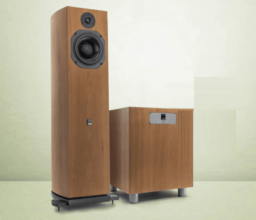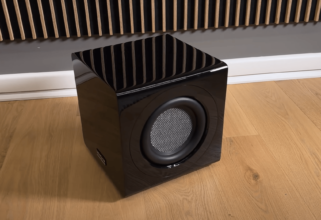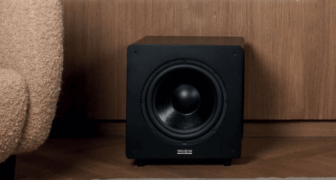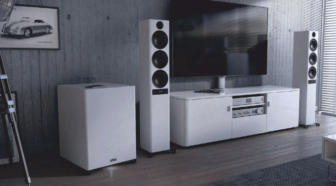SVS SB-17 and PB17-Ultra REvolution Review
by Simon Mendel
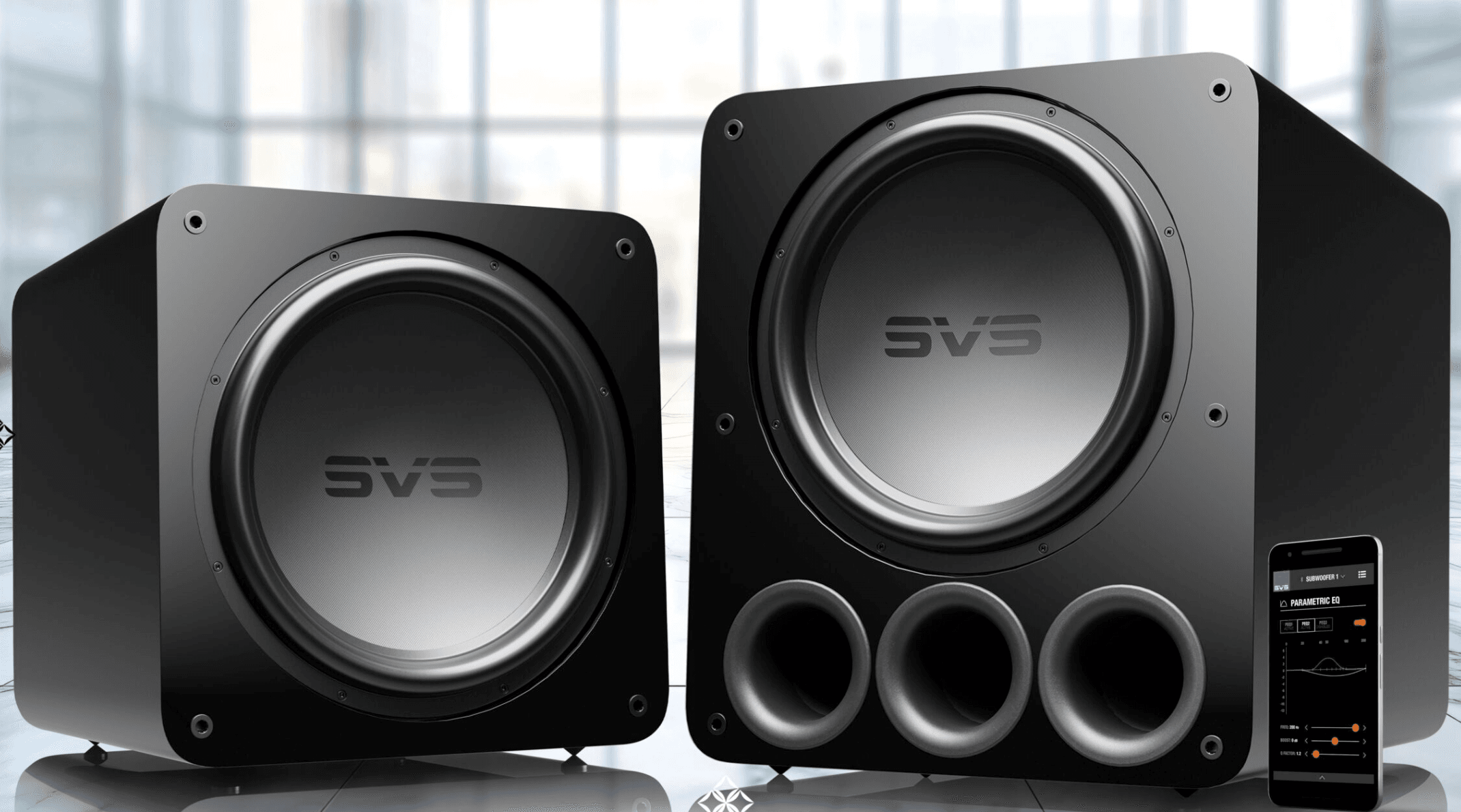
Just a few months ago, SVS celebrated its premiere in the 7Review. At that time, we had the first floor-standing speaker from the Americans, the Ultra Evolution Pinnacle, in our test. It convinced with a clever speaker design that definitely has its strengths in both music and film sound. But for today’s test, we are venturing into SVS’s specialty area, home cinema.
Giant Subwoofer
The SVS 17-Ultra-R|Evolution series essentially includes two devices: the SB-17 and the PB-17. After looking up the designations, it quickly becomes clear what distinguishes the two models. The “S” stands for “sealed”, which refers to a closed design, while the “P” stands for “ported”, meaning an open system with bass reflex openings. Apart from that, the devices are very similar in technology and construction. But before we delve into the technology of the new reference subwoofer series from SVS, we first want to consider the dimensions of the two subwoofers.
The SB-17 is the “smaller” of the two low-frequency speakers. However, “small” is relative here, as it boasts impressive dimensions of approximately 50×51×54 centimeters (width×height×depth). Its hefty weight is a solid 56 kilograms. The SB-17 definitely belongs to the large-format subwoofers, and you can already guess its sound volume and frequency response based on that alone. But the open SVS PB-17 takes it up a notch. On the one hand, it weighs an immense 75 kilograms—a weight that makes transporting it a real challenge and brought beads of sweat to our team’s foreheads. It is so large because it has bass reflex openings, and the housing volume has to be somewhat larger due to design. Overall, the PB-17 measures 55×63.5×72.3 centimeters (width×height×depth). Alongside the Perlisten D212s Subwoofer, it is the largest subwoofer we have ever had for testing. A real beast!
Appearance
The two flagship subwoofers are very similar in appearance. The noticeable differences lie in the housing volume and the fact that the PB-17 is open, while the SB-17 is a closed system. All other parameters like driver, DSP, amplifier, etc., are the same. The subwoofers of the 17-Ultra series have been completely redesigned and developed from scratch. The result is a rather classic look equipped with the latest technology—and all at a comparatively fair price. The PB-17 is available for $4,620, while the SB-17 is priced at $3,905. Both subwoofers have a fairly simple, massive housing, which is available either in black piano lacquer (high gloss) or in black oak wood look (matte). We find both color variants stylish. But what immediately catches the eye on closer inspection is the new driver that SVS has given the 17-Ultras.
New Driver
The driver installed here is the largest that SVS has ever developed. It measures a gigantic 17 inches, which is also where the number in the product name comes from. SVS calls the driver a quantum leap in terms of design and performance. The reason for this is the various innovations that SVS has built in. Completely newly developed are, for example, the voice coil, suspension, basket, and surround of the driver. The 17-inch driver consists of a diaphragm made of fiberglass, a material that SVS selected because of the ratio of stiffness to mass. The optimal diaphragm should be maximally stiff and minimally massive. Thus, SVS has used fiberglass as an efficient and linear diaphragm.
This diaphragm is driven by a double voice coil that measures eight inches. It is bifilar wound, meaning that two wires are wound into one coil. For this, SVS uses copper-clad aluminum wire, which combines the best properties of both elements. SVS expects optimal thermal capacity and magnetic field strength from this. Since generated heat is always a big issue with such powerful subwoofers, SVS generally placed great emphasis on the highest possible thermal efficiency. But a diaphragm and a voice coil alone do not produce sound; the latter must finally sit in a magnetic field. For this, SVS uses a 55-pound, four-piece toroidal ferrite magnet. To allow the diaphragm to move as far as possible, SVS uses an SBR rubber surround that allows pure, piston-like movement. In fact, the surround measures several centimeters, and the driver can move a lot of air, as we will later see—or rather, experience—in the sound test.
Amplifier and DSP
Since the subwoofers of the new SVS 17-Ultra series, like most modern home subwoofers, are active, they of course also have an integrated amplifier. The subwoofers do not have just one but two amplifiers built in. The SVS subs use two Class-D amplifiers in a dual mono-block design. By the way, this is the most powerful amplifier stage ever installed in a subwoofer for the consumer market! If you’re now wondering what these two amplifiers drive—after all, there’s only one driver—remember the double voice coil. Each amplifier drives one voice coil. This results in absurdly high performance with relatively low power consumption, because even a subwoofer of the 17-Ultra series is simply plugged into a standard power outlet. SVS had to come up with a way to still get as much movement energy as possible. Driving the diaphragm twice is a clever solution. Together with this amplifier module, the gigantic subwoofers each achieve 2800 watts RMS power. The peak power is even over 6000 watts. These are values that are hard to believe. But in our practical test, we will find out what these numbers mean in reality.
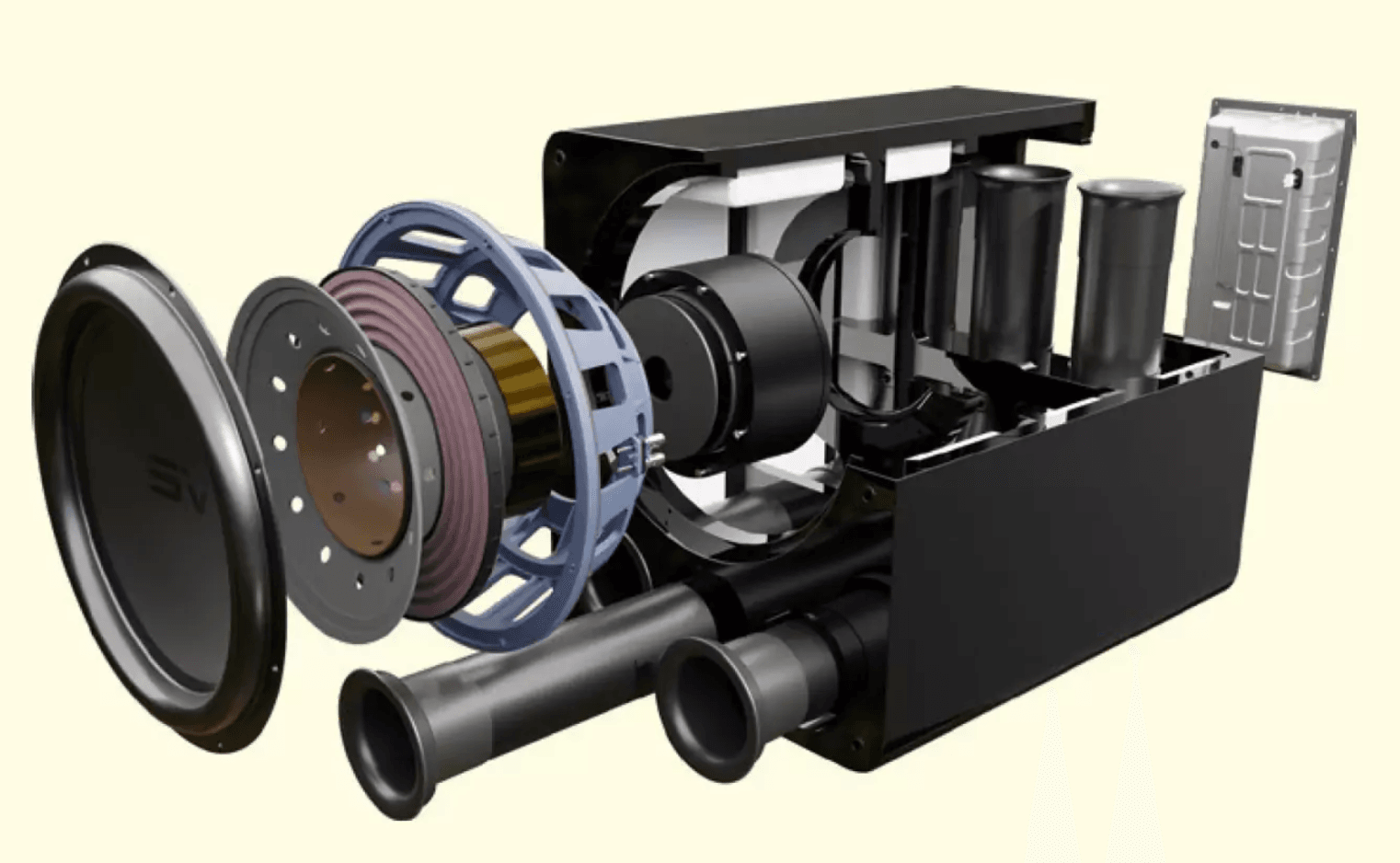
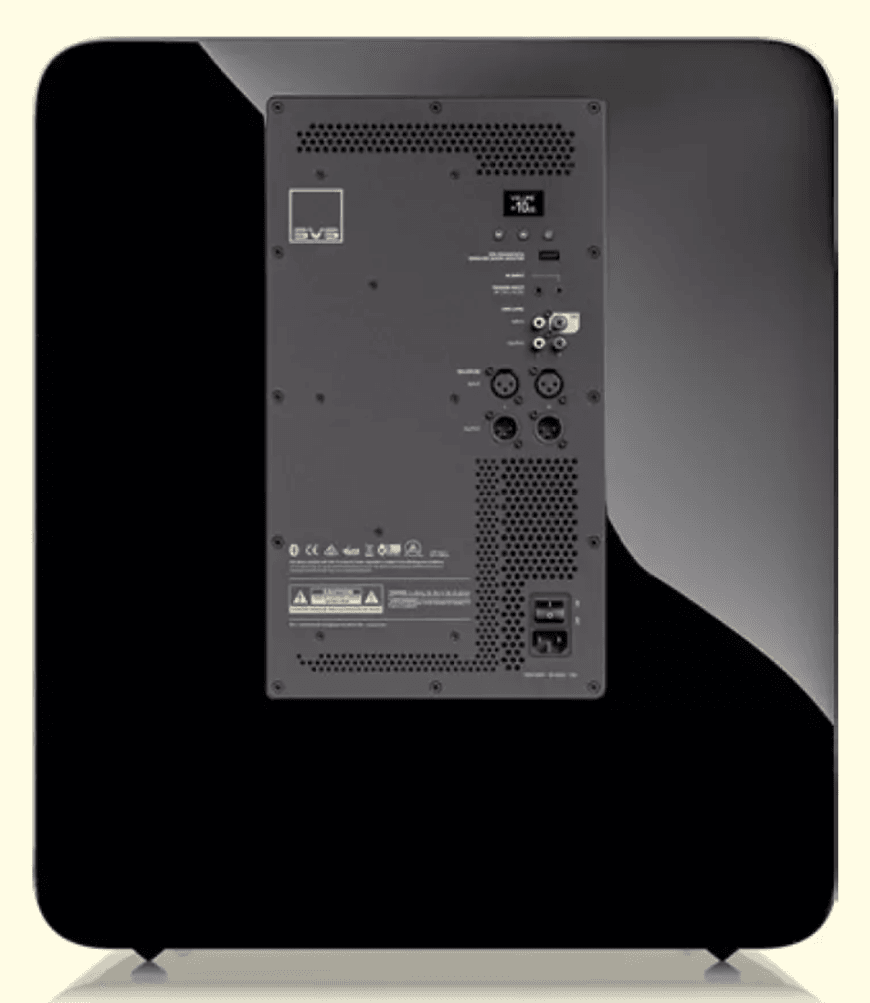
Inside the subwoofers, as in so many modern subwoofers, there is a digital signal processor, or DSP. SVS also manages to set standards for the consumer market here. They install a 295 MHz DSP with 56-bit double-precision filtering. This quintupled the performance compared to their previous subwoofer models. With a built-in DSP, control via an app naturally offers itself. This makes numerous functions of the chip conveniently accessible to the user. The app of the SVS subwoofers is simply called “SVS” and is one of the best and most comprehensive of its kind. The connection between smartphone and subwoofer is via Bluetooth—completely automatic, with just a few clicks, and in less than a minute. All relevant settings are then combined in a user-friendly interface. The SVS app leaves little to be desired; we can make various settings, including volume, filters, phase, polarity, EQ, room adjustment, and presets. All these functions can be adjusted very precisely, allowing us to perfectly adapt the subwoofer to its environment. An automatic room calibration is also promised by SVS to be added via a free update.
In the case of the open PB-17, there is also the “Tuning” function. Here we can adjust the tuning of the bass reflex channels. There are three presets: “Standard”, “Extended”, and “Sealed”, which slightly influence the frequency response. Exact curves and values can be found on the company’s website. It turns out that SVS takes the 17-Ultra-R|Evolution series seriously. They have thought of everything and want to deliver the best possible product to the home cinema enthusiast.
Connections
On the back of the subwoofers, we find the connection section. In addition to a socket for a power cable, there are inputs in the form of one pair each of RCA and XLR. Furthermore, we can plug an infrared receiver into the IR input, and the SVS Wireless Sender fits into the USB socket. On the output side, the subwoofers have one pair each of RCA and XLR. Again, we have everything we need with such a subwoofer. Now let’s look at the differences between the two low-frequency speakers.
PB-17
The larger subwoofer model makes everything even more extreme. Its three bass reflex openings each measure four inches and effectively extend the frequency response. Their airflow is optimized, and the tubes are located in a resonance-free environment, resulting in very clean reproduction. With the tuning via the app, we can adjust the bass reflex openings. In standard mode, it reaches frequencies from 14 Hz to 220 Hz. If we select the “Extended” function, it even goes down to 12 Hz. One hertz is already a lot in such infrasound ranges. The maximum level of the large SVS subwoofer is given at 137.1 dB, absolutely suitable for very large home cinemas—probably you could even sound a multiplex cinema hall with it. But we did not try that. Now let’s finally get to the sound impression that the two SVS flagships leave.
PB-17 Specifications:
- Device Class: Subwoofer
- Price Category: Luxury Class
- Manufacturer: SVS
- Model: PB-17 Ultra R|Evolution
- Price (MSRP): 4,199 Euros (~$4,570 USD)
- Dimensions (W/H/D): 55 x 63.5 x 74.4 cm
- Weight: 74.7 kg
Technical Data:
- Frequency Response: 14 Hz – 320 Hz
- Phase: Adjustable, stepless
- Power: 2800 W RMS
- Wireless Operation: No, but wireless module available
- Power Consumption: Standby: 0.5 W
- Inputs: Cinch, XLR, USB (Power supply for wireless module), Trigger
- Outputs: Cinch XLR
Special Features:
- Extreme Power
- Open Design
Advantages:
- Very powerful, deep bass
- Great app control
- Suitable for very large rooms
Disadvantages:
- None
Evaluation:
- Sound: 20/20 → 10/10
- Dynamics: 20/20 → 10/10
- Precision: 20/20 → 10/10
- Playback Quality: 60/60 → 10/10
- Features/Build Quality: 20/20 → 10/10
- User Friendliness: 8/10 → 8/10
- Price/Performance: Very good → 9/10
Intermediate Result: 88 out of 90 points
Final Result:
- Reference Class
- Score: 97% → 9.7/10

In Practice
We place both subwoofers in the cinema of Auerbach Verlag. This belongs more to the category of “small cinema hall” rather than “home cinema”. On authentic cinema seats, a total of 23 people can find space distributed over six rows. To start our test, we watch “Godzilla II: King of the Monsters” on Blu-ray—not exactly a cinematic masterpiece, but a furious action spectacle and perfect for a proper practical test of the two SVS giants. Both subwoofers make the floor and walls shake, and every stomp of Godzilla can be felt throughout the body—a fantastic cinema experience. It is impressive how extremely powerful yet precise the subwoofers work here.
Next, we watch “Trap”, a psychological thriller by M. Night Shyamalan. The film takes place at a pop concert that becomes the scene of a hunt for the serial killer “Butcher”. Again, the SVS subwoofers excel and deliver an impressive performance. The bass does not take the leading role but supports the soundtrack in an impressive and authentic way. In the concert scenes, it provides the powerful bass that enhances the concert feeling, while in the atmospheric moments, it amplifies the eerie discomfort and threatening mood. Particularly successful is the bass in the scenes outside the concert. When the protagonist Cooper is in the bathroom, the low frequency is brought to life with remarkable presence and realism—a prime example of how the SVS subwoofers play to their strengths.
After the psychological thriller at the pop concert, we continue with “The Three Musketeers – Milady”, the second part of the latest film adaptation of Alexandre Dumas’ novel. Again, the subwoofers conjure up an impressive, cinema-ready atmosphere in our home cinema. In one of the later scenes, D’Artagnan fights in a burning building—a dramatic fencing scene where the music merges with the hissing and crackling of the flames. The subwoofers perfectly stage this soundscape with powerful, gripping bass, further contributing to the intensity and drama of the scene.
Finally, we insert “Gladiator II”, which we were provided with as a pre-release version by our colleagues from BLU-RAY MAGAZIN—the advantage of having many editorial offices under one roof. In the scenes in the gladiator arena, we lose the feeling of not being in a real, professional cinema. The picture is impressive, the surround sound perfectly captures the atmosphere, and especially the deep, extremely precise bass makes the spectacle a true delight. Thus, we witness the absolute reference in terms of subwoofer sound. During our test run, we feel that the open PB-17 is somewhat oversized for our cinema hall. So we level it at -20 dB, and even at this level, its power is extremely mighty. This is not to say that its smaller brother (SB-17) is weak. It also makes our home cinema test a true experience. We have never perceived and felt such an accurate, deep, and shaking bass in our home cinema in this way. We are inclined to say both SVS flagship subwoofers easily outshine some commercial cinema sound systems.
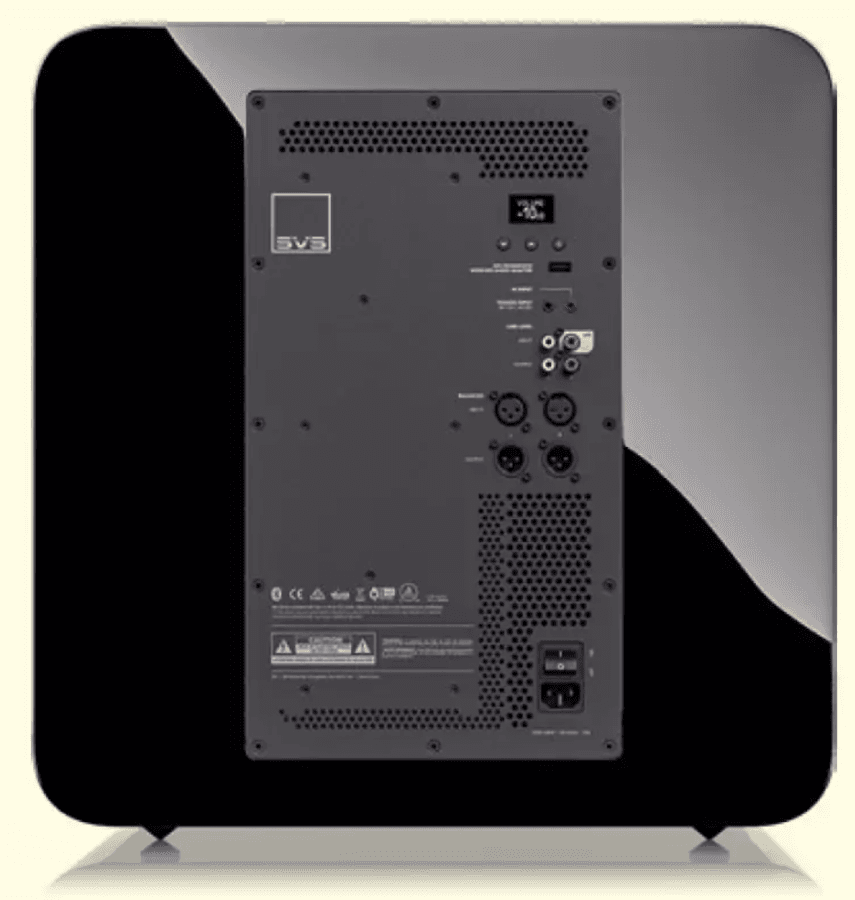
SB-17
We have already covered the dimensions and weight of the SB-17 in the text, and also that it is a sealed subwoofer. Now it’s time to clarify the acoustic nominal values. Since the SB-17 cannot be tuned via the app, these values are unchangeable. SVS provides a meaningful indication with a measurement tolerance of ±3dB. Here, the smaller of the two subs achieves a frequency response from 15 to 320 Hz, easily reaching into the infrasound range. By the way, you should not use a sine signal to search for room modes at such frequencies, as you risk finding the resonance frequency of the room or building—you can imagine what happens next. Just a public announcement. The maximum level of the subwoofers is given by SVS at 30 Hz, a quite sensible measurement. Here, the SB-17 achieves a maximum level of 132.3 dB. Unfortunately, they do not specify which dB it is. We suspect sound pressure level, where 132.3 dB is an almost insane value.
SB-17 Specifications:
- Device Class: Subwoofer
- Price Category: Upper Class
- Manufacturer: SVS
- Model: SB-17 Ultra R|Evolution
- Price (MSRP): 3,549 Euros (~$3,860 USD)
- Dimensions (W/H/D): 49.5 x 50.7 x 53.7 cm
- Weight: 56.25 kg
Technical Data:
- Frequency Response: 15 Hz – 320 Hz
- Phase: Adjustable, stepless
- Power: 2800 W RMS
- Wireless Operation: No, but wireless module available
- Power Consumption: Standby: 0.5 W
- Inputs: Cinch, XLR, USB (Power supply for wireless module), Trigger
- Outputs: Cinch XLR
Special Features:
- Extreme Power
- Open Design
Advantages:
- Very powerful, deep bass
- Great app control
- Suitable for large rooms
Disadvantages:
- No tuning possible via app
Evaluation:
- Sound: 20/20 → 10/10
- Dynamics: 20/20 → 10/10
- Precision: 20/20 → 10/10
- Playback Quality: 60/60 → 10/10
- Features/Build Quality: 19.5/20 → 9.75/10
- User Friendliness: 8/10 → 8/10
- Price/Performance: Very good → 9/10
Intermediate Result: 87.5 out of 90 points
Final Result:
- Reference Class
- Score: 96.5% → 9.65/10


